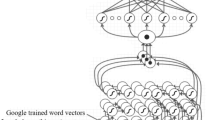Abstract
Sentencing bias and sentencing imbalance due to various factors is a worldwide problem at present, and many researches in recent years have applied deep learning to deal with the problem of charge prediction and sentence prediction to unify the process of conviction and sentencing in criminal trials, which has weakened the above problems to a certain extent and has positive significance to promote the scientific nature of legislation and judicial rationality. In this paper, we propose the common elements and individual elements of charges according to the criminal law and other legal norms, and design a deep neural network with cross-charge features(CCFDNN) based on warm-start, and the feature input constructed based on the elements of charges makes the CCFDNN have better interpretability. The original features are revisited using skip connections in the design of CCFDNN as a way to provide multi-scale semantic information to reduce training errors. In this paper, we conduct experiments on four common criminal charges for charge prediction and sentence prediction, and explain the experimental results in detail, aiming to make the trial results more reasonable.
This work was partly supported by National Key R &D Program of China under Grant 2020YFC0832400. This work was partly supported by Key R &D Program of Sichuan Province under Grant 2021YFS0397.
Access this chapter
Tax calculation will be finalised at checkout
Purchases are for personal use only
Similar content being viewed by others
References
Ringquist, E.J., Emmert, C.E.: Judicial policymaking in published and unpublished decisions: the case of environmental civil ligaton. Polit. Res. Q. 52(1), 7–37 (1999)
Liu, C.-L., Hsieh, C.-D.: Exploring phrase-based classification of judicial documents for criminal charges in Chinese. In: Esposito, F., Raś, Z.W., Malerba, D., Semeraro, G. (eds.) ISMIS 2006. LNCS (LNAI), vol. 4203, pp. 681–690. Springer, Heidelberg (2006). https://doi.org/10.1007/11875604_75
Lauderdale, B.E., Clark, T.S.: The Supreme Court’s many median justices. Am. Polit. Sci. Rev. 106(4), 847–866 (2012)
Lin, W.-C., et al.: Exploiting machine learning models for Chinese legal documents labeling, case classification, and sentencing prediction. Proc. ROCLING 17(4), 140 (2012)
Sulea, O.-M., et al.: Exploring the use of text classification in the legal domain. arXiv preprint arXiv:1710.09306 (2017)
Chen, S., Wang, P., Fang, W., Deng, X., Zhang, F.: Learning to predict charges for judgment with legal graph. In: Tetko, I.V., Kůrková, V., Karpov, P., Theis, F. (eds.) ICANN 2019. LNCS, vol. 11730, pp. 240–252. Springer, Cham (2019). https://doi.org/10.1007/978-3-030-30490-4_20
Zhang, H., Wang, X., Tan, H., Li, R.: Applying data discretization to DPCNN for law article prediction. In: Tang, J., Kan, M.-Y., Zhao, D., Li, S., Zan, H. (eds.) NLPCC 2019. LNCS (LNAI), vol. 11838, pp. 459–470. Springer, Cham (2019). https://doi.org/10.1007/978-3-030-32233-5_36
Hu, Z., et al.: Few-shot charge prediction with discriminative legal attributes. In: Proceedings of the 27th International Conference on Computational Linguistics (2018)
Shen, Y., et al.: Legal article-aware end-to-end memory network for charge prediction. In: Proceedings of the 2nd International Conference on Computer Science and Application Engineering (2018)
Yang, X., et al.: Interpretable charge prediction with multi-perspective jointly learning model. In: 2019 IEEE 5th International Conference on Computer and Communications (ICCC). IEEE (2019)
Huang, G., et al.: Densely connected convolutional networks. In: Proceedings of the IEEE Conference on Computer Vision and Pattern Recognition (2017)
Kingma, D.P., Ba, J.: Adam: a method for stochastic optimization. arXiv preprint arXiv:1412.6980 (2014)
Lundberg, S.M., Lee, S.I.: A unified approach to interpreting model predictions. Adv. Neural Inf. Process. Syst. 30, 1–10 (2017)
Acknowledgements
The authors would like to express their gratitude for the support from National Key R &D Program of China under Grant 2020YFC0832400 and Key R &D Program of Sichuan Province under Grant 2021YFS0397.
Author information
Authors and Affiliations
Corresponding author
Editor information
Editors and Affiliations
Rights and permissions
Copyright information
© 2023 The Author(s), under exclusive license to Springer Nature Singapore Pte Ltd.
About this paper
Cite this paper
Ren, E., Weng, Y., Wang, H. (2023). Deep Neural Networks with Cross-Charge Features. In: Hong, W., Weng, Y. (eds) Computer Science and Education. ICCSE 2022. Communications in Computer and Information Science, vol 1811. Springer, Singapore. https://doi.org/10.1007/978-981-99-2443-1_51
Download citation
DOI: https://doi.org/10.1007/978-981-99-2443-1_51
Published:
Publisher Name: Springer, Singapore
Print ISBN: 978-981-99-2442-4
Online ISBN: 978-981-99-2443-1
eBook Packages: Computer ScienceComputer Science (R0)




